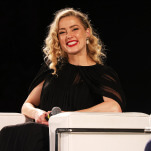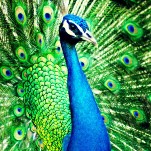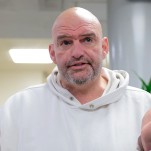A Back-to-School Reading List from the Jezebel Staff
EntertainmentTo close out the summer, here’s a list of books that the Jezebel staff has recently enjoyed. The list is wide ranging and includes everything from Lesley Nneka Arimah’s celebrated book of short stories to historical nonfiction, memoirs, and Peter Godfrey Smith’s astonishing investigation of animal consciousness. This list is in no particular order and reflects (hopefully) the realities of reading rather than recently published books.
Hazel Cills
The Babysitter at Rest, by Jen George: If you are craving some fiction that’s extremely funny and does not seem to exist in any sense of reality, I’d recommend George’s debut book of stories. She’s a surrealist writer who sort of reminds me of writers like Nell Zink or Alexandra Kleeman. While the stories here are all delightfully loopy, I’m partial to the first in which a snarky angel swoops into an apartment to help a flailing woman plan a party, but just sort of ends up mooching off her. You will laugh a lot reading it, I swear.
Boundless, by Jillian Tamaki: I love just about everything cartoonist Jillian Tamaki has published (even her Instagram account is great, I recommend a follow) and Boundless, her last collection of short comics, is no different. Many of these stories focus on familiar digital rabbit holes, from a story about an early-Internet viral mp3 file named “SexCoven” that supposedly killed teens to another titled “1.Jenny” about a girl who finds an alternate version of herself on Facebook. And of course, the whole thing is beautifully illustrated!
Kelly Faircloth
The Short Life and Long Times of Mrs. Beeton, by Kathryn Hughes: “Mrs. Beeton” was a Victorian cross between Betty Crocker and Martha Stewart—she’s rightly billed as “the first domestic goddess” in this 2007 book’s subtitle. But she’s been better known as a brand or even a concept than an actual, historical woman, which Kathryn Hughes attempts to remedy with this book. Isabella Beeton helped create the modern women’s magazine with her husband, a pioneering (but perpetually luckless) publisher and then died young of postpartum complications—only for her name to take off with a life of its own. Her story provides a perfect window into the dawn of mass media generally and targeted to women in particular.
Rich Juzwiak
Other Minds: The Octopus, the Sea, and the Deep Origins of Consciousness, by Peter Godfrey-Smith: Here are five things I learned from this lovely, deep, but never prohibitively dense cross of biology and philosophy:
1. Despite their wondrous color-changing ability, “cephalopods, in almost all cases, are said to be color-blind.”
2. Because our closest common ancestor that connects us to cephalopods existed about 600 million years ago and was a simple organism, “cephalopods are an independent experiment in the evolution of large brains and complex behavior” and “probably the closest we will come to meeting an intelligent alien.”
3. I have no interest in eating aliens, especially smart ones. (I’m not alone in this.)
4. The Earth’s Ediacaran Period (635–541 million years ago) is thought to have been largely free of conflict and predation, largely because a lot of the (again) relatively simple organisms did not interact. So maybe we should all agree to stop talking and looking at each other if we want world peace.
-

-

-

-

-

-

-

-

-

-

-

-

-

-

-

-

-

-

-

-

-

-

-

-

-

-

-

-

-

-

-

-

-

-

-

-

-

-

-

-








































